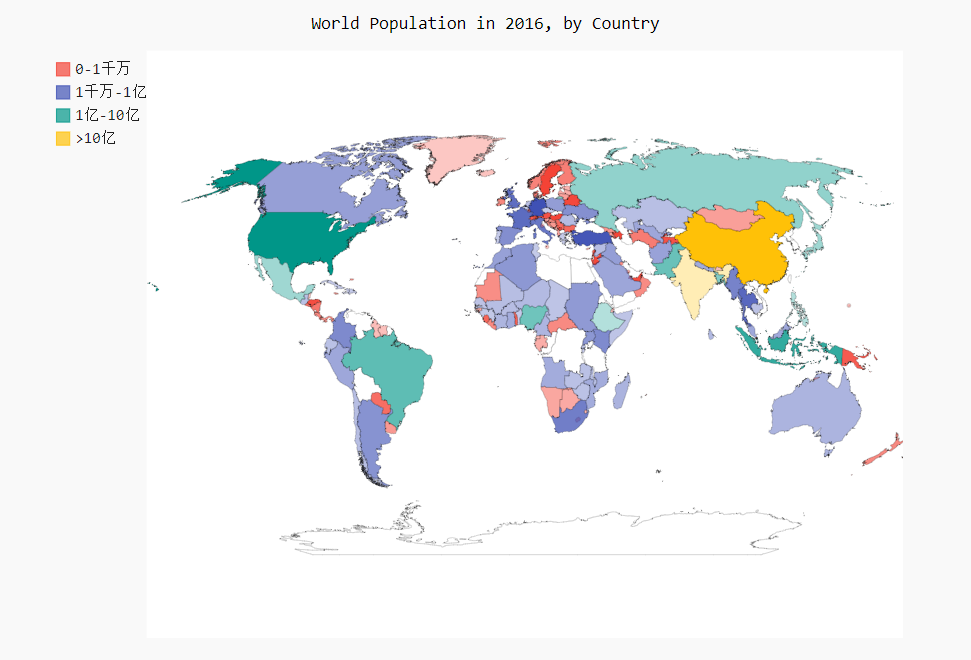
数据集可在 https://datahub.io/JohnSnowLabs/population-figures-by-country 下载
#coding=utf-8
import json
from country_codes import get_country_code
import pygal.maps.world
from pygal.style import RotateStyle as RS, LightColorizedStyle as LCS
# 将数据加载到列表中
filename = 'population_data.json'
with open(filename) as f:
pop_data = json.load(f)
# 创建一个包含人口数量的字典
cc_populations = {}
for pop_dict in pop_data:
country_name = pop_dict['Country_Name']
population = pop_dict['Population_in_2016']
code = get_country_code(country_name)
if code:
cc_populations[code] = population
# 根据人口数量将国家分成4组
cc_pop_1, cc_pop_2, cc_pop_3, cc_pop_4 = {}, {}, {}, {}
for cc, pop in cc_populations.items():
if pop < 10000000:
cc_pop_1[cc] = pop
elif pop < 100000000:
cc_pop_2[cc] = pop
elif pop < 1000000000:
cc_pop_3[cc] = pop
else:
cc_pop_4[cc] = pop
# wm_style = RS('#336699', base_style=LCS)
wm = pygal.maps.world.World()
wm.title = 'World Population in 2016, by Country'
wm.add(u'0-1千万', cc_pop_1)
wm.add(u'1千万-1亿', cc_pop_2)
wm.add(u'1亿-10亿', cc_pop_3)
wm.add(u'>10亿', cc_pop_4)
wm.render_to_file('world_population.svg')
from pygal_maps_world.i18n import COUNTRIES
def get_country_code(country_name):
for code, name in COUNTRIES.items():
if name == country_name:
return code
return None













